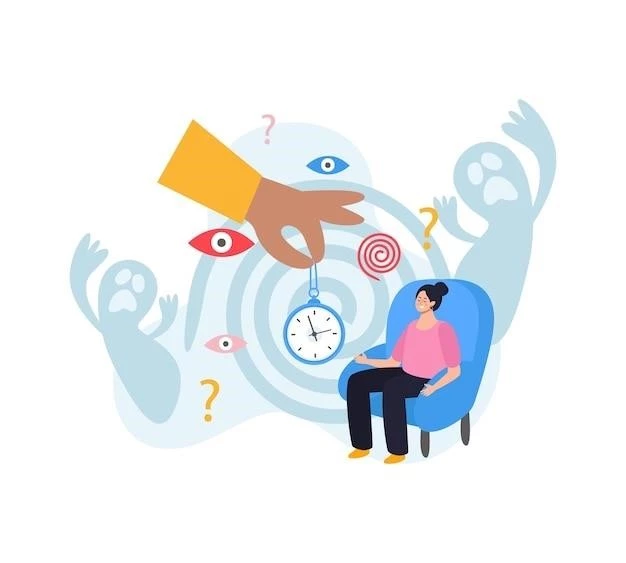Overview of Specific Phobia
Specific phobias are irrational and persistent fears of certain objects or situations that pose little or no actual danger. This article reviews the epidemiology, etiology, diagnosis, and treatment of specific phobias, as well as the neurobiological mechanisms underlying them. The article also discusses how specific phobias differ from other types of fear-related disorders, such as PTSD.
Definition and Characteristics
Specific phobias are irrational and persistent fears of certain objects or situations that pose little or no actual danger. Individuals with specific phobias experience excessive anxiety and unreasonable fear when exposed to the phobic stimulus or anticipating its presence. This fear leads to avoidance behavior, impacting daily functioning and causing distress. These phobias typically start in childhood and can center around various objects or situations, such as animals, heights, or specific environments.
Epidemiology and Prevalence
Specific phobias are prevalent anxiety disorders, affecting about 8% of women and 3% of men annually. Common specific phobias include fears of animals (zoophobia), heights (acrophobia), and thunderstorms (astraphobia or brontophobia). Additionally, approximately 5% of individuals exhibit fear related to blood, injections, or injury. These phobias often originate in childhood and may persist into adulthood if left untreated, impacting daily life and causing distress.
Diagnosis of Specific Phobia
The diagnosis of specific phobia involves assessing excessive fear, immediate anxiety response, and avoidance behavior towards the phobic stimulus. Symptoms must persist for at least six months, significantly impact daily functioning, and not be better explained by another mental disorder. Understanding these criteria is essential for accurate diagnosis and effective treatment planning.
DSM-5 Criteria
The DSM-5 criteria for diagnosing specific phobia include excessive fear, immediate anxiety response, and avoidance behavior towards the phobic stimulus. Symptoms must persist for at least six months, significantly impact daily functioning, and not be better explained by another mental disorder. Understanding and applying these criteria are essential in the accurate diagnosis and effective management of specific phobias.
Clinical Presentation
Individuals with specific phobias exhibit excessive anxiety and unreasonable fear when exposed to or anticipating their phobic stimulus, leading to avoidance behavior. This fear is often out of proportion to the actual threat posed by the stimulus. The clinical presentation may include physical symptoms like rapid heartbeat, sweating, trembling, and difficulty breathing. Understanding these manifestations is vital for accurate diagnosis and effective treatment.
Causes and Risk Factors
Specific phobias may result from a combination of biological, psychological, and environmental factors. Traumatic experiences, such as being bitten by a dog, can trigger specific phobias. Genetic predispositions and learned behaviors also play a role. Understanding these factors is crucial in diagnosing and treating specific phobias effectively.
Biological Factors
Specific phobias can be influenced by a combination of biological factors. Genetics may play a role in predisposing individuals to developing specific phobias, as certain phobias have been found to run in families. Additionally, traumatic experiences or learned responses can trigger biological changes in the brain, affecting how individuals perceive and respond to fear-inducing stimuli. Understanding these biological underpinnings is crucial in comprehensively addressing specific phobias.
Psychological Factors
Psychological factors play a significant role in the development of specific phobias. Traumatic experiences, conditioning, and cognitive biases can contribute to the onset and maintenance of phobic responses. Individuals may develop irrational fears based on past experiences or learned associations. Additionally, cognitive processes such as catastrophic thinking or overestimation of threat can exacerbate phobic symptoms. Understanding these psychological factors is crucial in addressing specific phobias effectively.
Environmental Factors
Environmental factors can contribute to the development of specific phobias. Traumatic experiences, such as witnessing accidents or being in threatening situations, can trigger the onset of specific phobias. Additionally, learned behaviors from observing fearful reactions in others or receiving negative reinforcement for certain fears can play a role. Environmental factors shape an individual’s perception and response to phobic stimuli, highlighting the importance of addressing environmental influences in the treatment of specific phobias.
Treatment of Specific Phobia
Treatment for specific phobias often involves cognitive-behavioral therapy (CBT) and exposure therapy. CBT aims to challenge and modify irrational thoughts related to phobic stimuli, while exposure therapy helps individuals confront their fears in a controlled manner. These evidence-based approaches can effectively reduce phobic symptoms and help individuals regain control over their lives.
Cognitive-Behavioral Therapy (CBT)
Cognitive-Behavioral Therapy (CBT) is a common treatment approach for specific phobias, focusing on identifying and challenging irrational thoughts related to the phobic stimulus. By addressing maladaptive beliefs and behaviors, CBT helps individuals reframe their perception of feared objects or situations, leading to decreased anxiety and improved coping strategies.
Exposure Therapy
Exposure therapy is a common treatment for specific phobias that involves gradual and controlled exposure to the feared object or situation. By facing the phobic stimulus in a safe environment, individuals learn to manage their fear response and reduce anxiety over time. Exposure therapy aims to desensitize individuals to the phobic trigger, helping them overcome avoidance behaviors and regain control over their lives.

Difference between Specific Phobia and Other Fear-Related Disorders
Specific phobias differ from other fear-related disorders like PTSD in terms of the triggers and symptoms. Whereas specific phobias revolve around irrational fears of specific objects or situations, PTSD involves a broader range of responses to traumatic events, such as flashbacks and nightmares. Understanding these distinctions is crucial for accurate diagnosis and tailored treatment.
Comparison with Post-Traumatic Stress Disorder (PTSD)
Specific phobias and PTSD differ in terms of triggers and symptoms. While specific phobias involve irrational fears of specific objects or situations, PTSD encompasses a broader range of responses to traumatic events, such as flashbacks and nightmares. Understanding these variations is essential for accurate diagnosis and targeted treatment strategies.

Impact of Specific Phobia on Daily Life
Specific phobias can significantly impact daily life by causing avoidance behavior and functional impairment. Individuals may go to great lengths to avoid their phobic triggers, leading to limited social interactions, occupational challenges, and reduced quality of life. Understanding the impact of specific phobias on daily functioning is crucial for developing effective treatment strategies and improving overall well-being.
Functional Impairment and Avoidance Behavior
Specific phobias can lead to significant functional impairment and avoidance behavior, impacting various aspects of daily life. Individuals may struggle with social interactions, work tasks, and educational opportunities due to their phobic triggers. Avoidance behavior can further restrict one’s activities and limit participation in essential life functions, highlighting the profound impact of specific phobias on individuals’ overall well-being.
